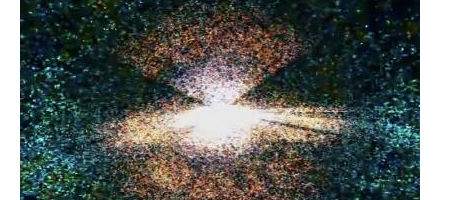Scientists have created the biggest ever 3D map of the distant universe, using the light from 14,000 supermassive black holes, or quasars, at the centers of galaxies billions of light years away.

Constructed by scientists with the third Sloan Digital Sky Survey (SDSS-III), the map is the first major result from the Baryon Oscillation Spectroscopic Survey (BOSS).
It’s the first attempt to use baryon acoustic oscillation (BAO) as a precision tool to measure dark energy.
“Quasars are the brightest objects in the universe, which we use as convenient backlights to illuminate the intervening hydrogen gas that fills the universe between us and them,” says Anže Slosar of Brookhaven National Laboratory.
“We can see their shadows, and the details in their shadows, allowing us to see how the gas is clumped along our line of sight. The amazing thing is that this allows us to see the universe so very far away, where measuring positions of individual galaxies in large numbers is impractical.”
The scale of the new map means that it shows an early time in the history of the universe, when the distribution of matter was nearly uniform. Any effects of dark energy detected so early cound answer basic questions about its nature.
“Our exploratory paper includes less than a tenth of the 160,000 quasars that BOSS will study, but already that’s enough to establish a proof of the concept. This is a potentially revolutionary technique for mapping the very distant universe,” says Slosar.
“We’re paving the way for future BAO experiments like BigBOSS to follow suit.”
BigBOSS is a proposed survey that will find precise locations for 20 million galaxies and quasars, covering 10 times the volume of the finished BOSS map.
“By the time BOSS ends, we will be able to measure how fast the universe was expanding 11 billion years ago with an accuracy of a couple of percent,” says Patrick McDonald of Berkeley Lab and Brookhaven.
“Considering that no one has ever measured the cosmic expansion rate so far back in time, that’s a pretty astonishing prospect.”
Says Slosar, “There is all this structure at the distant universe that has never been seen before. Sometimes I feel like an adventuring cartographer from the Middle Ages!”






